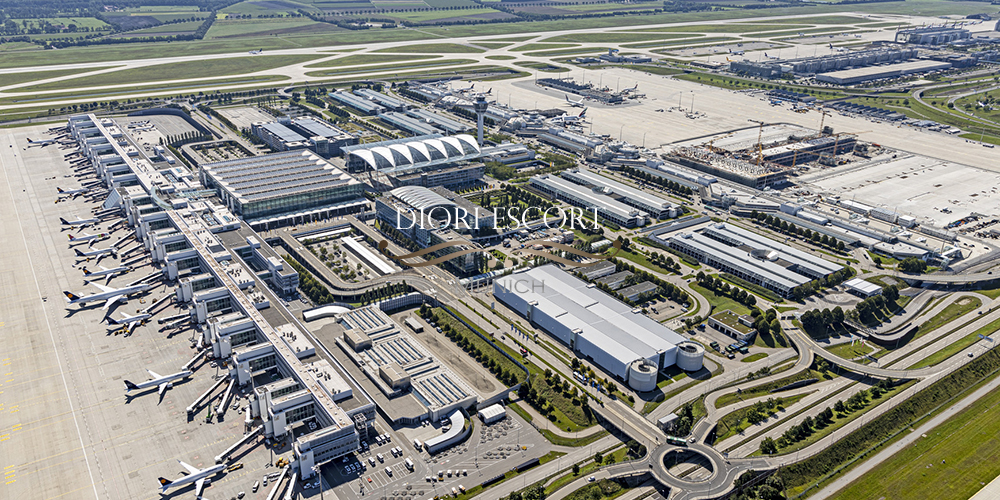Munich Airport is Germany’s second-largest airport and serves as a hub for tourist arrivals and departures. The most critical details regarding “Franz Josef Strauß” Airport are the following.
The most vital facts about Munich Airport
- Location: In the Edinger Moos, approximately 30 kilometers northeast of Munich.
- Yes, Munich is served by various airlines from across the world.
- MUC is the IATA code; EDDM is the ICAO code.
- S-Bahn, regional trains to and from eastern Bavaria, express buses, taxis, and rental cars are available.
- Gastronomy: Each terminal features diverse gastronomic options; the Airbräu restaurant even produces its beer.
- Numerous shops provide a variety of items ranging from apparel and souvenirs to exquisite wines.
How Do You Get To Or From Munich Airport?
Munich Airport is served by the S-Bahn lines S1 and S8. During the day, trains run at least every 20 minutes. The journey duration varies according to the line, but you should budget at least 45 minutes to reach the airport from the city center.
There is also an express bus running between several stops and the airport; however, the journey time is comparable to the S-Bahn. Public transportation requires a ticket. Additionally, regional trains from Regensburg and vice versa serve the airport.
Taxi (cab)/Travel Service Providers: Taxi stands are located at the airport, and a ride to the city center will cost approximately 80 euros. Of course, taxis are readily available in central Munich, for example, at the enormous cab stands outside the main train station and Odeonsplatz. Additionally, there are ride-hailing services such as Uber in Munich.
Rental cars: At the Munich airport, you can rent a car. Car-sharing services such as DriveNow from BMW are also available at the airport. Attention: This requires a valid EU driver’s license.
And you can also call an escort to your airport hotel room for an hour or more for your relaxation while you stay in the hotel in Munich airport and the girl will be there in 30 minutes to serve you the best escort service you have ever had in Germany.
The Airport’s Structure And Capacity
Munich Airport has a capacity of roughly 90 aircraft movements per hour and a passenger capacity of approximately 53 million per year. Two parallel runways, each 4,000 meters long and 60 meters wide, are provided.
All planes not operated by Lufthansa arrive and depart from Terminal 1. Terminal 2 and its adjacent building are used entirely by Lufthansa of Germany. A driverless train connects the central and satellite installations.
Gastronomy And Retail
Numerous culinary alternatives are available throughout the airport, ranging from substantial fast-food chains to tiny eateries and even the snack bar for a quick nibble on your way to the gate. If you’re looking for a taste of Bavaria, visit Airbräu, located on the plaza between the terminals. They serve traditional Bavarian fare, but they also make their beer. You should try with your GFE escort companion on your date to enjoy the best traditional drink before an intimate sexual intercourse and have some deep anal in a submissive way like a slave.
Of course, if you’re seeking to spend a few more euros before your trip, Munich Airport also has what you’re searching for: You can just type Diori-Escort.com and find a perfect lady for you whom you wanna make your dream sex lady for all the erotic services you have ever dreamed about and they will satisfy you with all your needs in a dominating way of sex and please you as you want to be and numerous excellent boutiques offer exquisite fashion and jewelry. However, duty-free staples such as alcohol and traditional souvenirs such as glasses, mugs, and lighters are also available. Bear in mind the customs restrictions of the nation of entry when shopping.
Munich International Airport, formerly Franz Josef Strauss International Airport, is Germany’s second busiest airport and the primary gateway to Bavaria. It is Germany’s busiest airport in terms of passenger volume, after Frankfurt Airport. Munich Airport serves 248 destinations globally and has a passenger capacity of 28 million per year.
The airport occupies a 15.6-square-kilometer parcel of land formerly home to a hamlet called Franzheim. The town was demolished, and its occupants relocated before the airport’s development began in 1980. The airport’s operations began in 1992.
Munich Airport features two passenger terminals and two parallel 4,000-meter-long runways capable of handling 90 aircraft movements per hour. Munich Airport was named a 5-Star Airport by Skytrax for the first time outside of Asia in May 2015.





